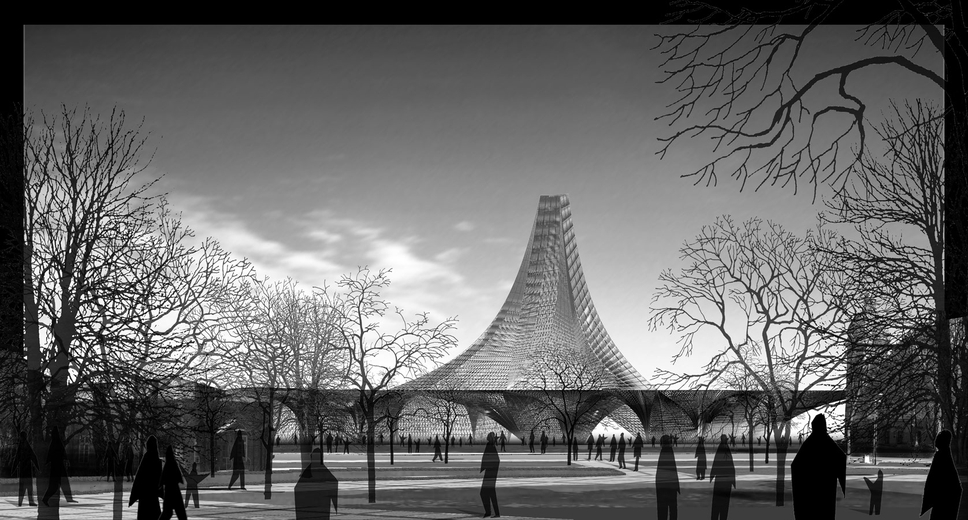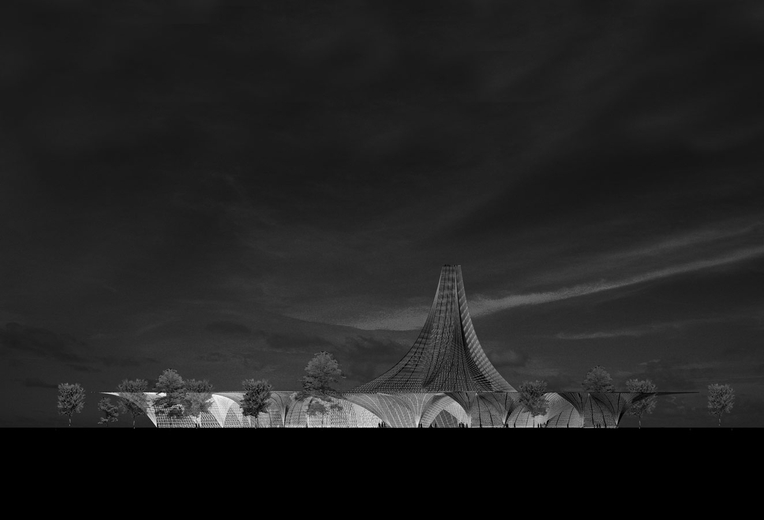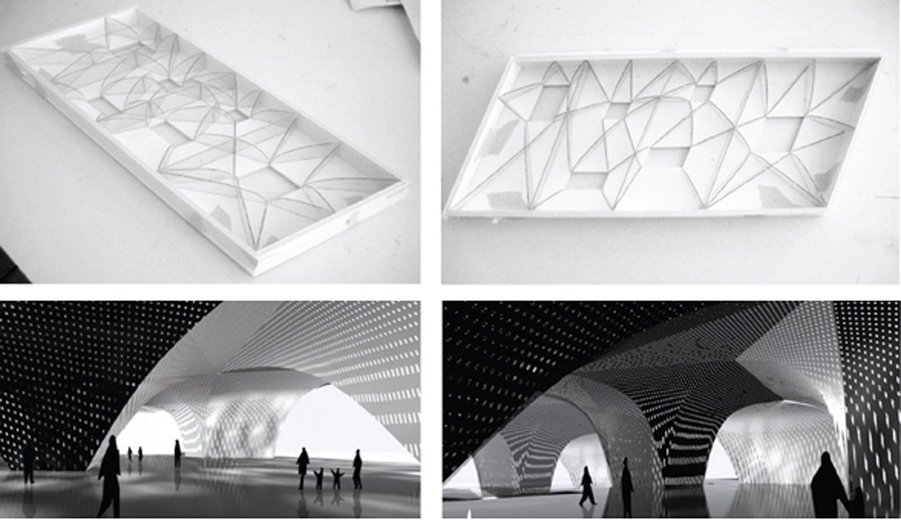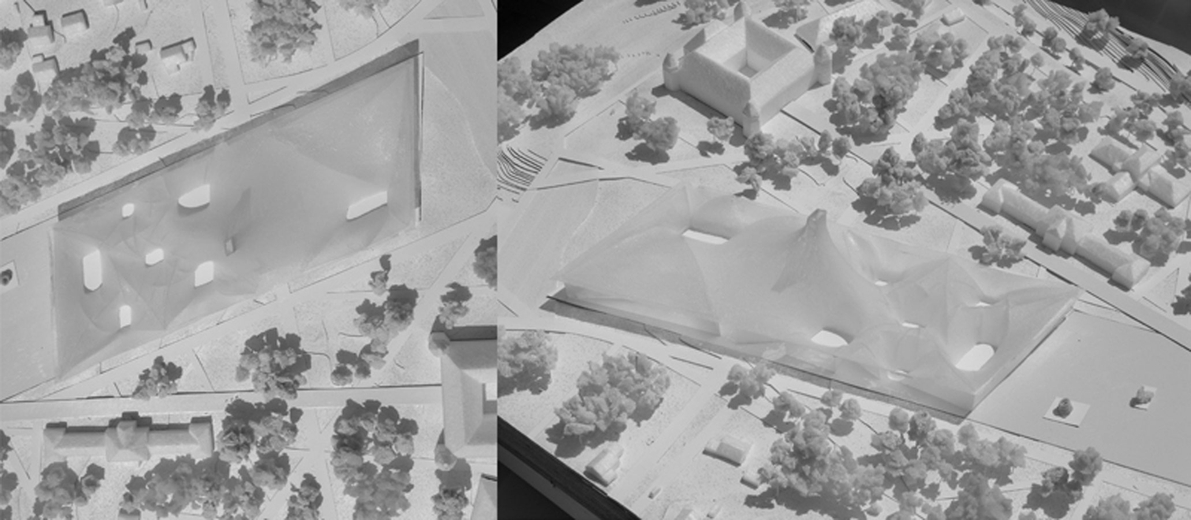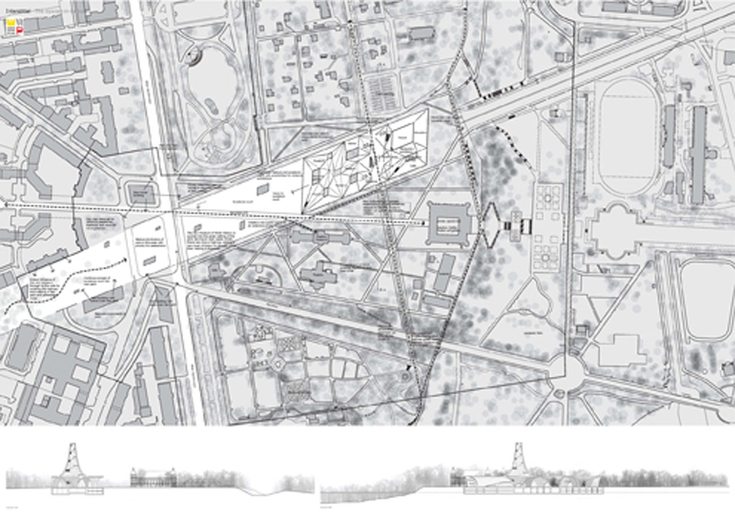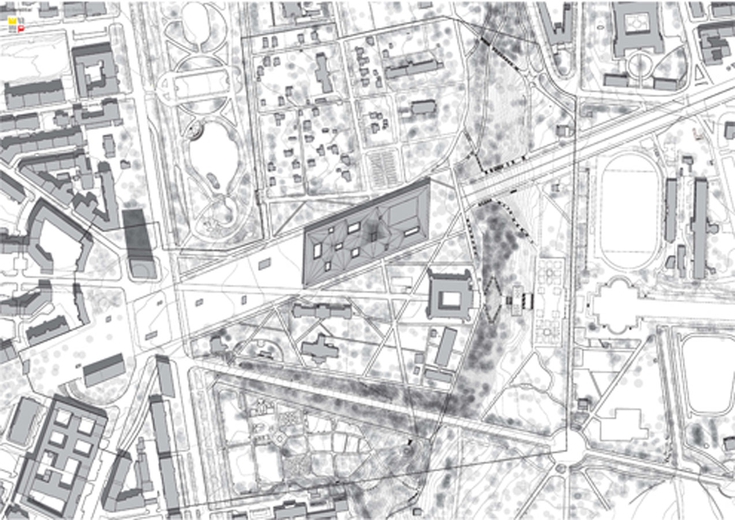Interstitial- The Spaces-in-Between – Przestrzenie "pomiędzy”
Competition entry for the New Polish History Museum in Warsaw.
Warsaw, Poland
2009
Sector: Cultural
Client: Museum Historii Polski
Project Status: Competition
Adam Zamoyski might have been writing about the creation of this museum when, writing his earlier history of Poland in 1987, he asked ‘How to present a culture which had been largely obliterated, whose remains survived only underground or in exile?’ When he rewrote his book in the context of post-1989Poland, he described the country’s revival as a political entity as ‘fundamentally’ altering the way it was perceived. An old lesson of identity would have to be re-learned: and how better than by re-stating its past in an active, living museum placed at the very heart of Polish history? The projected museum is not just important to Poland. In Europe and throughout the world it would be a form of reparation for the destruction caused for centuries to one of Europe’s most important cultures.
„Jak przedstawić kulturę, która w tak wielkim stopniu została zniszczona, a pozostałości po niej albo spoczywają pod ziemią, albo rozsiane są po całym świecie?” pytał Adam Zamoyski w swojej historii Polski z 1987 roku. W kolejnym wydaniu, już po przemianach 1989 roku, opisał odrodzenie Polski jako diametralnie zmieniające sposób jej postrzegania. Na nowo należało zdefiniować narodową tożsamość. Czy można zrobić to lepiej, niż przez ponowne wprowadzenie przeszłości do aktywnego, „żyjącego” muzeum umieszczonego w samym sercu polskiej stolicy, symbolicznie w sercu jej historii? Projektowane muzeum nie byłoby jedynie istotne dla Polski. Dla Europy i świata stałoby się formą zadośćuczynienia za krzywdy jakie wyrządzono przez stulecia tej jednej z najważniejszych europejskich kultur.
Museums can be tombs. Nothing will bring back the civilization that built Athens or Pompey. Nor would there be any valid reason for doing so – what is dead is dead. Even then, however, few countries need a specific museum of ‘national’ history. To put it another way, only when a culture has been deliberately obliterated is the need to recover the many fragments of the past in one place truly vital (the root word is ‘life’). Such a museum should be alivingorganism, one that can be lived in and enjoyed as it instructs visitors (Poles, but just as importantly, foreign visitors) in the hidden and under-appreciated values of Poland’s past.
Muzea mogą być grobowcami. Nic nie przywróci już cywilizacji które niegdyś zbudowały Ateny czy Pompeje; sztuczne wskrzeszanie tych kultur byłoby pozbawione sensu – co jest martwe niech pozostanie martwym. Są jednak kraje, które potrzebują muzeum narodowej historii. W przypadkach, gdy kultura była wyniszczana z pełną świadomością i konsekwencją, powstaje potrzeba wydobycia i wyeksponowania fragmentów przeszłości. Takie muzeum powinno być „żywym” organizmem, przestrzenią, która może być „przeżywana” oraz dostarczać wielu wrażeń zwiedzającym (zarówno Polakom jak i przyjezdnym) oprowadzanym po ukrytych i często niedocenianych okresach Polskiej przeszłości.
That past is not a continuous past, but one full of highs and lows. The spaces between the highs – the lows, partition, dismemberment, war, occupation – are an important part of the future museum’s existing holdings, part of a structure which we conceive of as a ‘floating world’, which to the Japanese is the temporary, makeshift world of an ever-changing urban landscape. This is expressed in our project in part by the restoration of an earlier landscape, natural and royal, afloat on top of the castle escarpment and a redefinition of the two great axes of Warsaw along which it lies, thus healing and concealing the gash created by the Trasa Lozianskowka highway. Our museum is not imposed on the existing structures but ‘floats’ pavilion-like above the landscape, bringing parkland right into the museum and enfolding the existing structures in that park. The irregularities of its facade, (like Poland, facing West) and central tower, the signature of the project, as well as the hollowed-out ‘lows’, indicate the speculative, ‘floating’ nature of Poland’s history and culture. We see it as a structure for a future in the process of being created.
Przeszłość ta, nie jest ciągła, ale pełna wzlotów i upadków. Przestrzenie pomiędzy wzlotami – okresy upadku, rozbiory, wojna, okupacja – są ważną częścią przyszłego muzeum którą określiliśmy „przepływającym światem”, w kulturze Japonii będącym tymczasowym, prowizorycznym światem ciągle zmieniajacego się krajobrazu miejskiego (ukiyo). W naszym projekcie ukazaliśymy to poprzez odbudowanie krajobrazu z przeszłości oraz redefinicję dwóch ważnych Warszawskich osi wzdłuż których leży. Nasze muzeum nie jest obiektem dodanym do istniejących struktur, ale raczej unosi się jak pawilon ponad krajobrazem, wpuszczając przestrzenie parku do wnętrza. Nieregularności fasad, centralna wieża, stanowiąca znak rozpoznwczy projektu, oraz wydrążone przestrzenie upadku, wskazują na płynną naturę polskiej historii i kultury. Widzimy całość jako strukturę na przyszłość, która będzie podlegać procesowi tworzenia.
These three elements – in-between-spaces, the floating world and the irregularity of terrain, landscape and facades – seem to us to make the museum not merely a space in which to exhibit and display national history, but also a statement of that very history. By its site in proximity with the Zamek Ujadowska castle and its museum of modern art, the nearby theatre complex, our museum seeks to fill out the master plan for the whole culture area. By incorporating the highway and using the available parks, it aims to restore the view of the city as seen from the museum and of the escarpment as seen from all directions.
Te trzy element – przestrzenie „pomiędzy”, przepływający świat, oraz nieregularności terenu, krajobrazu i fasad – sprawiają, że muzeum nie będzie jedynie przestrzenią do prezentowania narodowej historii, ale także swoistą jej deklaracją. Poprzez swoje położenie, w bezpośrednim sąsiedztwie Zamku Ujazdowskiego z Centrum Sztuki Współczesnej oraz mieszczącego się nieopodal Instytutu Teatralnego, nasze muzeum stanie się istotnym elementem nowopowstałej przestrzeni kultury. „Obudowanie” Trasy Łazienkowskiej i użycie istniejących parków ma na celu odtworzenie widoku miasta z muzeum oraz obrazu skarpy ze wszystkich kierunków.
To go back to where we started, how important is a museum for the identity of a nation? The challenges of the past have not changed; they have simply changed form. Zamoyski ends his new edition by stating the obvious:Poland’s ‘past undoubtedly holds most of the answers’ to its future.
Wracając do pytania, jak istotne jest muzeum dla tożsamości narodu? Wyzwania przeszłości nie zmieniły się; zmieniła się tylko ich forma. Zamoyski kończy nowe wydanie swojej książki stwierdzając rzecz oczywistą: „w Polskiej historii znajdziemy odpowiedzi na pytania dotyczące jej przyszłości.”

